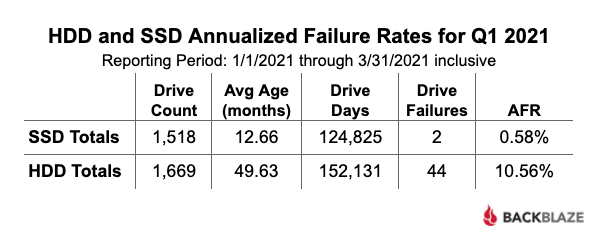Flash! Ahahhhhhh – Saviour of the universe!

Recently I’ve been working with many customers and account teams who have been making the transition from HDD or Hybrid configurations to All-Flash, and at the heart of this there is inevitably going a conversation around cost. Too often though, not enough attention is being paid to the true benefits of Flash which all translate into business value.
While PowerFlex works great for any media, it truly shines when its capabilities are fully unleashed – and the best way to unleash that is though Flash (SSD’s, or NVMe drives).
Finance and procurement teams are often primarily focused on cost and can’t always see past the sticker price (not all of them so apologies for the generalization), but how do you convince them that your organization needs to move to all All-Flash even though it might be (for now) a little more expensive than an HDD / Hybrid type of system?
Since the inception of storage, much focus has always been on $/GB as the ultimate measure of the cost of a storage system – unfortunately this metric falls way short in explaining the value of it. To explain value, we need to look a lot further past the simple $/GB aspect – we also need to consider performance, functionality, scalability, reliability, ease of management and other metrics.
Flash prices continue to drop every day, and by 2026 it is expected to be at parity – at which point of course it will be a no brainer to go for All Flash (as we can just look at $/GB again). In the meantime though, we need to spend some effort to demonstrate that All-Flash is far more valuable to just about any organization.
Don’t get me wrong though – spinning-disk still has its place in the market, but not for primary Block storage. When spinning disk is used, it should be for Backup, File, or Object storage, which are better met through purpose built solutions such as Data Domain, Isilon, or ECS respectively.
Block storage though is where your mission critical applications and databases are sitting, and this is where All-Flash should be the mainstay of your datacenter eco-system and strategy moving forward.
| Metric | Flash | HDD |
| Highest Reliability | Yes | No |
| Fastest Rebuilds | Yes | No |
| Lowest Latency | Yes | No |
| Highest IOPS | Yes | No |
| Highest Bandwidth | Yes | No |
| Time Saving | Yes | No |
| Future Proof | Yes | No |
| Lowest $/GB media cost | No | Yes |
While this table may look like enough justification for All Flash — it still needs further explanation:
- Highest Reliability – Flash is at least 10x more reliable than spinning disk (see below). This means way fewer service events and a lot less risk to your critical data.
- Fastest Rebuilds – Data protection is a function of how fast the underlying media can assist in the rebuild process. Once again, this translates into a lot less risk.
- Lowest Latency – Your transactional OLTP databases love this, and in turn this means that so do your end-users, and your business in general. No wants to order something from you when it takes an eternity.
- Highest IOPS – Vastly more transactions per second.
- Highest Bandwidth – Advanced analytics for your business. Being able to work on massive sets of data is becoming as critical to your success as is breathing oxygen to live. This is an opportunity cost when going with HDD.
- Time Saving – Troubleshooting performance issues due to media related limitations can be a significant drain on IT resources. By going All-Flash, the probability of encountering performance issues is drastically reduced.
- Future Proof – A lot of times people will say “I don’t need the performance of Flash” — which may be true today, but where it always falls short is tomorrow. Unexpected surges in performance requirements frequently catch many people with their pants down, which has left their companies in the lurch when the infrastructure is unable to deliver. I can’t emphasize this enough, as it’s too frequent of a tale.
- Lowest $/GB media cost – All of a sudden doesn’t sound so important does it?
Circling back to reliability, Backblaze recently released their Q1-2021 report – and in it was this simple but very important table:

The difference in reliability here is staggering – an order of magnitude in fact. What does this mean though to you as an owner or end-user?
- Higher media reliability = Less rebuilds.
- Less rebuilds = Less risk
- Less rebuilds = 10x less drive replacements.
- Less drive replacements = Less calls at 2am Saturday night alerting you to to this.
- Less calls at 2am Saturday night = less headaches and more time up your sleeve for other priorities.
PowerFlex has an additional major advantage when it comes to Flash based media instead of HDD: Flash can support in-line compression, and the PowerFlex appliance and rack solutions both offer a 2:1 Data Reduction Guarantee. The usual terms and conditions exist (can’t compress encrypted data etc), but this is still a very significant statement in the software defined storage (SDS) space. As far as I know, no other SDS technology is offering such a guarantee today. With this guarantee in place, it is now at parity pricing when comparing PowerFlex Flash systems against PowerFlex HDD solutions.

PowerFlex also doesn’t waste any Flash capacity on Caching (it is not a cache based architecture) — which is also unique and a significant advantage in terms of total cost of ownership, performance, and endurance. Cache based architectures are often a false economy – if the cache tier is saturated, performance will degrade to HDD speeds which these days is an unacceptable situation. Ultimately deciding on a cache centric architecture is a gamble – which you may or may not get away with in the future.
In regards to media endurance, PowerFlex’s very simple but powerful mesh-mirror architecture leads to incredible Flash-media endurance. Every application write is only equal to two backend writes. Other technologies that rely on caching means that incoming writes first hit a cache tier on Flash, then sooner or later will perform another read, and another write to the capacity tier. This read and write amplification has a significant impact on the performance and endurance of the SSD’s (which go up in cost significantly for the drives that have higher endurance).
This endurance advantage is two-fold:
- Ninety-nine times out of 100 you can use 1 DWPD media for all of your devices = lower cost.
- Your drives last a heck of a lot longer – even after your warranty period, your drives will continue to survive for years on end = the ultimate in ROI.
Still considering HDD based media for your block workloads? I hope this gave you some food for thought, or at least some ammunition to use in your next RFP.


